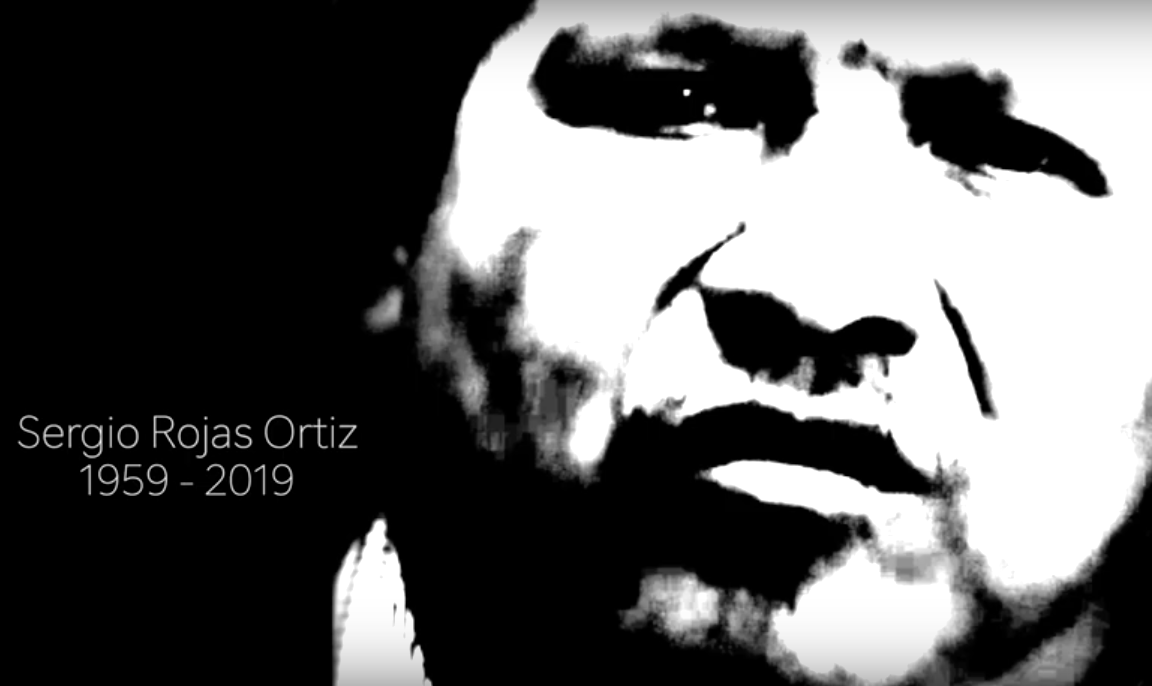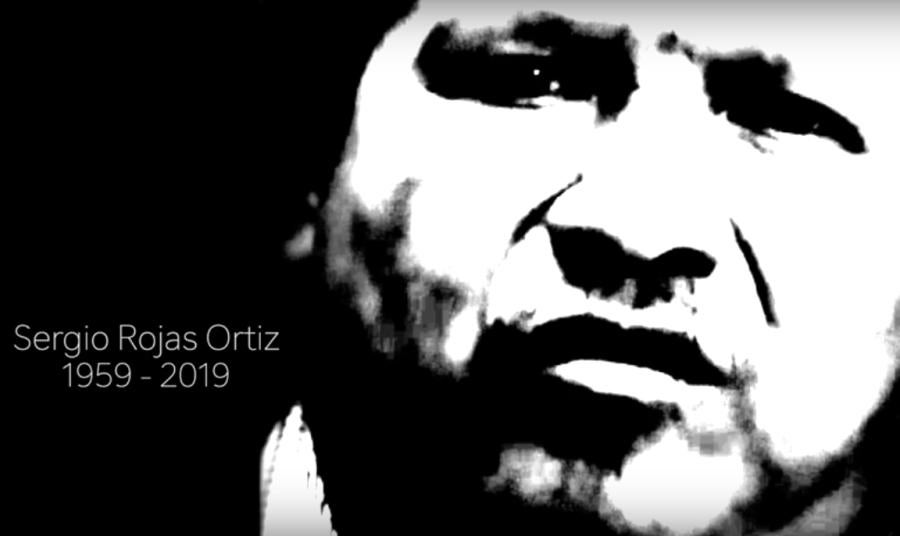
By John McPhaul and Nati Garcia (Maya Mam/ CS Staff)
A Costa Rican online newspaper recently published leaked information of a report by investigators into the March 18, 2019 murder of Costa Rican Bribri Indigenous leader Sergio Rojas, showing that the authorities had identified four suspects in the murder as long ago as September 19, 2019.
The report, made public in January 2021 by the online newsletter CRHoy.com, authored by the Judicial Investigation Organization (OIJ by its Spanish acronym), stated that Rojas was gunned down at night while in his house in the hamlet of Yeri in the Salitre Indigenous Territory by two male suspects of Nicaraguan nationality. According to the report, they were paid 1 million colones by two Costa Ricans, intellectual authors, who wanted to get rid of Rojas over a land dispute.
The 59-year-old Bribri leader was at the forefront of a movement led by Indigenous Peoples to recover their ancestral lands, which were legally granted to them by the 1977 Indigenous Law that established Indigenous Territories, but which failed to provide for the purchase of the land from those who currently occupy it.
Rojas had emerged as a leader capable of marshaling the Indigenous community, numbering about 104,000, to re-settle their lands after complaining of decades of government inaction. But conflicts arose between Indigenous Peoples and settlers, both those who illegally acquired land and those who held title to the land before the 1977 law was passed and have not been compensated by the government.
While the leak of the information for the case violates legal norms, the existence of leads and identified suspects begs the question of why the prosecutors asked for the case to be shelved on Sept. 29, 2020, saying that they were done with the investigation. Still, Oscar Retana, attorney for Sergio Rojas' family, decried the leak of the investigation. Retana noted that the leak's narrative could lead to the identification of witnesses in the case, exposing them to pressure, threats or aggression "in an indigenous territory where they haven't found an answer to the multiple sustained and well-founded claims of the deficient actions of the Judicial Branch, notwithstanding the antecedents of aggression, threats and damage and without to date obtaining a guilty verdict for openly racist crimes."
According to CRHoy.com, the OIJ report also includes information pertaining to three telephone messages in the investigator's possession in which Rojas' murder is discussed ahead of the act. "The three messages (recorded) an hour and 15 minutes before Rojas Oritz's death are fundamental for this investigation. They expose clear knowledge that the investigation had about the crime, since by our interpretation, before the crime the communication that day said that someone was 'going to visit the chief of the Indians’ (Rojas) to ‘hunt’ him. That could only be communicated by a person with full knowledge and full control of the area and intellectual participation of the murder," said the OIJ report according to CRHoy.com.
Gustavo Oreamuno, the spokesperson for the NGO Coordinadora de Lucha Sur Sur, said the revelation of the evidence requires the state to act. "The evidence indicates where this investigation is headed, and that it relates to the land disputes. Now it is time for the prosecutors to act according to the evidence," said Oreamuno.
In January 2021, under pressure from the Indigenous community and human rights groups, a criminal court ordered the investigation to proceed. "Prosecutors tried to get the case closed, saying their investigation was done. The criminal court rejected their motion affirming what we were always saying, that the State did not do a complete investigation," said Vanessa Jimenez, an attorney for the non-governmental organization, Forest People Programme, which has been assisting the Bribri Peoples.
Prosecutors insist that they never stopped investigating despite the request to shelve the case."The institution has not stopped attending to all kinds of information and tips that have been received in relation to the case, even after the request for dismissal, and has requested of the Judiciary a prolongation of the police investigation," the Prosecutor's Office told CRHoy.com. However, Elides Rivera, a Brörán Indigenous resident of the Terraba Territory told CRHoy.com that the leaked report and the failure of authorities to act sums up their attitude toward the case: "They can always resort to acts that devalue or delegitimize the investigation– not due to lack of evidence–but rather it is a question of racism or xenophobia against Indigenous Peoples, an attempt to make it seem like we are lying." said Rivera.
Since the assassination of Rojas, intimidation, and threats against Indigenous Peoples from ranchers and non-Indigenous settlers illegally occupying their lands have only increased. Two years have passed and there is still no justice. The imposing threats to shut down the resistance of the Indigenous Peoples of Costa Rica has deterred some from reoccupying their ancestral lands, but have made others more committed, they say. Now there is more organization and communication between the communities of Cabagra, Térreba, Salitre, China Kicha and all surrounding villages within Bribri, Cabécar, and Térraba territory.
Ongoing since colonial conquest, the Indigenous Peoples of Costa Rica, including the Bribri, Cabécar, Boruca, Guaymí, Hueter, Maleku, Matambú, and Térraba have experienced systemic discrimination, racism, and forced removal from their lands. But persecutions against Indigenous People have surged in the South of Costa Rica since the Indigenous communities have been organizing to recover their lands, especially in Puntarenas province which has the highest concentration of Indigenous population.
Over 20 years, the Bribri, Cabécar, and Térraba people have been in a process of recuperating ancestral territory. Rojas was one of the first members of the Uniwak clan of the Bribri, Salitre people to lead the collective process of Indigenous land recuperation until his death on March 18, 2019.
Following his death, violent threats and aggressive attacks of intimidation have continued towards the Indigenous Peoples of the Bribri, Cabécar, and Térraba territories with little state intervention of safety or preoccupation- something that led to the murder of Jerhy Rivera Rivera, Indigenous Brörán of Terraba, on February 24, 2020, who was also leading a process of land reclamation in the area of Mano de Tigre. Rivera’s death came just two weeks after the attempted murder of Mainor Ortiz Delgado, a Bribri leader who survived a bullet wound in his thigh after a shooting in his community in Río Azul de Térraba. Today there continue to be regular reports of death threats among 12 Indigenous people suffering from the illegal occupation of their lands.
“Currently the biggest problem is that of land tenure. Lands in our territories are illegally occupied by finceros [non-indigenous ranchers],” explained Lesner Figuero Lázaro, Bribri of the Tuadiwak clan and Coordinator of the Concejo Ditsö Iriria Ajkönuk Wakpa of the Bribri territory, explained. “I could say many things about the murder of Sergio Rojas, but one of the greatest lessons that have been inherited is the defense of our land, which is our mother, which we defend not only with our cultural methods, but also legally by the law of Indigenous Peoples, Convention 169, and other instruments that protect us to defend our land.”
The tensions will progress as the state law enforcement continues to favor non-Indigenous beneficiaries of land ownership on Indigenous lands without their Free, Prior, and Informed Consent, said Indigenous leaders. Meanwhile, Indigenous community leaders have made endless attempts to seek justice on a judicial level domestically, and internationally. A decision by the Inter-American Commission on Human Rights in 2015 advising for the implementation of precautionary safety measures protecting the Bribri and Brörán Peoples was incapable of preventing the violence. The Bribri community is having to look upon international organizations and allies among non-governmental organizations in Costa Rica for advocacy while continuing to protect and defend their lands on the ground.
Some Indigenous Peoples in Costa Rica have vowed to continue fighting for what they consider an essential and fundamental part of their identity, spirituality, livelihoods, and ways of life. “We, the Bribris, without our lands, are nothing, we need the land to continue surviving. The land is what gives us everything, without land we don't have water, we don't have a house, we don't have our natural medicine, we don't have trees, we don't have air, we don't have wind, we don't have clothes, we don't have food, it is the land that gives us everything, it is a gift that was given to us, before our creation, Sibu created the Earth so that we can live in it and we must take care of it for that mandate as Sibu left it,” explained Lázaro.
Indeed, the next generation of Bribri leaders are already stepping in to continue the work of their elders. Yensie Esteban Jimenez Sandoval, of the Muriwai clan and a young Bribri leader from the territory of Tainí and Talamanca shares, “The issue is that non-Indigenous owners claim to possess titles but they do not teach them [its history], and this leads to doubts or uncertainty about land possessions. It is known that the oldest plan over this area reflects that it is all indigenous territory. The same is said by the elders of our communities. The problem is that certain regional authorities provide us with a map. At first, we did not know that these lands belonged to us until we investigated. When the elders raised the issue, they told us that these lands were ours. From there the claim to our lands was born. Now it is up to the youth to recover what is ours, our lands, and without ever giving up.
“I lost years without my culture and when I grew up I decided to go back to my roots. I returned to the territory, with my people and here I am. For me it is very important to know where I come from, to know who my ancestors were, to know my customs because I feel that they belong to me, they identify me, it is my identity. Sibu put that in my heart and I am proud to be Indigenous. I am the happiest person being Indigenous. I want to fight for my community, for my people; but also for the natives of Talamanca and for the natives of the whole world.”
--John McPhaul is a Costa Rican-American freelance writer based in San Juan, Puerto Rico.
Photo: Sergio Rojas, from video "Sergio Rojas y últimas recuperaciones" by eraverdeucr on Youtube.

